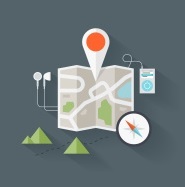Lets work together



Suite 3A, Chapel Allerton House, 114 Harrogate Road, Leeds, LS7 4NY
ukinfo@integrated-skills.com
+44 (0) 3300 888 670

The story always seems to be the same; the supply chain works very well… until the ‘final mile’ when pitfalls like confusing instructions, incorrect addressing, no one at home and the like can – and often do – rear their ugly heads. The last mile is of huge concern to industry, and for good reason: it is responsible for up to two-thirds of overall transportation costs.
In certain sectors, such as healthcare, last mile inefficiency can lead to dangerous consequences. In developing countries the distribution of health care services as well as medicines has become a big problem especially for medicines requiring refrigeration.
Understanding the Role of Route Planning Software in Final Mile Delivery
While route planning software can solve a number of challenges it cannot protect the fleet manager from ‘real world’, last mile pitfalls. No software can predict when someone will be at home; but the software can plan routes taking into account delivery time windows, if given by the customer. The software can’t account for a police incident on route but can take into account historic traffic congestion and route plan accordingly.
Take a Hike
Leading route optimisation software can plan routes that are consist of a combination of motor vehicles, bicycles and walking. Last mile delivery is often an on foot requirement and GIS based route optimisation software can produce a walking route including turn by turn instructions. The mapping data is key ensuring every alley, path and non-road option is available to the software. Even then, when using a Geographic Information System, alleys and paths can be drawn on the map.
Communication and Route Planning for Final Mile Changes
One major contributor to the success of last mile route planning is data communications. There are several critical data items which drive efficient delivery. These include cancellations, redelivery instructions, traffic reports, and between-vehicle redistributions. Route planning software can handle this operational changes so long as data is communicated at source (the delivery person) to the planner who can make use the software to create another route. This re-routing optimisation can also, in certain cases, be automated.
The Importance of Driving Down Costs Associated with Last Mile Delivery
There is no doubt that last mile delivery can be a complex task, especially when goods must travel around the world, riding on several modes of transport. It is true that the last mile is the smallest part of the total distance. However, because there are fewer goods available to share transport in the final mile, any additional cost cause a rise in expense for the item being delivered.
A rise in expense is usually passed on to the customer. This is one reason why ensuring last mile delivery is as efficient as possible is of such importance. When last mile costs can be lowered and delivery sped up, customer loyalty and confidence increases. This is even more so when an estimated time of arrival can be confirmed by the customer. For the shipper – regardless of whether they are the manufacturer, distributor or retailer – customer loyalty can make them much more competitive in the marketplace and allow them to attract even more customers.
Would you like to know more about Increasing Last Mile Efficiency? Fill in your details below and let us know how we can help.
Website Designed & Built by we are CODA